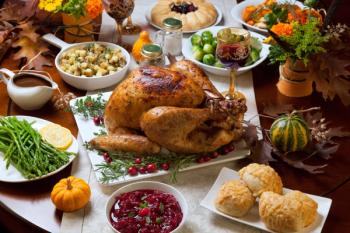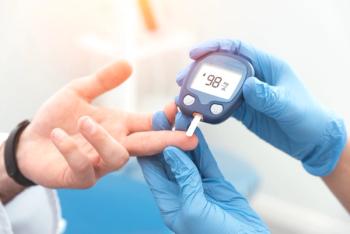
Forget protein—This is the nutrient kids need
Colleen Sloan, PA-C, RDN, unpacks the essential nutrient children are missing in their diets and how providers and parents can start implementing.
It’s a concern we hear from parents all the time: “My son refuses to eat meat, and I’m really worried he isn’t getting enough protein.” This is a common worry among families, but kids often need much less protein than parents think. In fact, most parents greatly overestimate how much protein their child requires.
Here’s a quick review of daily protein needs by age1:
- 1–3 years: 13 g/day
- 4–8 years: 19 g/day
- 9–13 years: 34 g/day
- 14–18 years: 52 g/day for males, 46 g/day for females
(These are general guidelines; individual needs vary based on medical conditions or activity levels.)
If a child isn’t eating meat, texture might be the culprit—toddlers are still developing chewing skills, and meat can be tough to manage. But even if they refuse meat, many children easily meet their protein needs through other foods. For example, a toddler who eats 1 cup of milk (8 g protein), 1 cheese stick (5-6 g protein), 1 scrambled egg (6 g protein), and 1 waffle (2 g protein) exceeds the 13 g daily requirement. After a quick review of the child’s diet, you can see they are meeting their target needs. These moments provide an opportunity to provide reassurance and shift the focus to another critical nutrient that often flies under the radar: iron.
Why iron matters
Iron is a cornerstone of healthy growth and development. It’s a key component of hemoglobin, allowing red blood cells to deliver oxygen throughout the body, and myoglobin, which supports muscle oxygenation.2 Iron also plays essential roles in neurological development, physical growth, cellular function, and hormone production. There are two forms of dietary iron:
- Heme iron (from meat, poultry, and seafood), which is more easily absorbed.
- Nonheme iron (from plants and fortified foods) requires extra help for absorption.
The prevalence of iron deficiency
Iron deficiency (ID) is a significant global health concern, particularly among children. The World Health Organization (WHO) estimates that 39.8% of children aged 6–59 months worldwide suffer from anemia, with iron deficiency as the leading cause.3 Iron deficiency may result from inadequate dietary iron intake, decreased absorption, blood loss, or parasite infection.
Most children with anemia are asymptomatic, and the condition is often identified during routine bloodwork. While pallor is considered the most notable clinical sign, it typically becomes evident only when hemoglobin levels drop to 7–8 g/dL.4 A detailed history may uncover subtle symptoms such as fatigue, reduced physical activity, shortness of breath, or cognitive challenges and developmental delays. Our goal is to proactively prevent anemia by equipping families with practical nutrition education.
How much iron do kids need?
Here’s a breakdown of daily iron requirements by age2:
- Infants (0-6 months): 0.27 mg
- Infants (6-12 months): 11 mg
- Children (1-12 years): 7-10 mg
- Adolescent boys: 11 mg
- Adolescent girls: 15 mg
While many parents tend to fixate on ensuring their child is consuming enough protein, redirecting their attention to iron-rich foods can help them better understand their child’s nutritional needs. Here’s how much iron you’ll find in common foods:
- ½ cup canned black beans: 2.3 mg
- 1 ounce cooked ground beef: 0.83 mg
- 1 ounce serving of cashews: 1.9 mg
- ½ cup mashed sweet potato: 1.2 mg
- ½ cup Cheerios cereal: 1.8 mg
- 1 medium potato: 1.7 mg
Fun, kid-friendly iron-rich foods
To make iron-rich foods more appealing to kids, suggest creative and fun ways to serve them. Focus on dishes that combine familiar ingredients with a nutritional boost, like adding beans to a favorite burrito or topping oatmeal with fruit and seeds. Encourage parents to experiment with these ideas and tailor meals to their child’s preferences while incorporating iron-rich ingredients. Encourage families to try these easy, iron-packed meals:
- Chili eggs with tomatoes and peppers
- Spaghetti and meatballs with tomato sauce
- Bean burritos with salsa
- Orange juice with iron-fortified cereal
- Peanut butter on whole-grain bread
- French toast with mango
- Oatmeal topped with strawberries and chia seeds
Tips to boost iron absorption
A few final tips to optimize iron absorption:
- Limit milk consumption to 16–24 oz/day for toddlers, as excessive milk can interfere with iron absorption.
- Pair iron-rich foods with vitamin C (e.g., serve tomatoes, broccoli, oranges, papaya, sweet potatoes, and strawberries with meals) to enhance absorption.
- Suggest using iron-fortified cereals in recipes like baked goods or casseroles. (just monitor the added sugars and keep them to less than 6g per serving)
- Highlight the WIC program, which offers iron-fortified cereals for families in need.
- Recommend mixing seeds like ground flax or hemp into smoothies, oatmeal, or other dishes. Make it fun and allow the child to sprinkle on the toppings.
So, the next time a parent worries about their child’s protein intake, reassure them their child is likely meeting their needs—and gently shift the conversation to iron. By focusing on small, actionable dietary changes, you can make a big difference in the health and well-being of your pediatric patients.
For more tips on picky eaters, check out episode 82 of the Exam Room Nutrition podcast here:
References:
1. Institute of Medicine. Dietary Reference Intakes for Energy, Carbohydrate, Fiber, Fat, Fatty Acids, Cholesterol, Protein, and Amino Acids. The National Academies Press; Washington, DC, USA: 2005. p. 1358. [DOI ]
2. Iron. NIH Office of Dietary Supplements. Updated October 9, 2024. Accessed November 21, 2024. https://ods.od.nih.gov/factsheets/Iron-HealthProfessional/
3. World Health Organization. Anaemia in women and children. The Global Health Observatory. 2021. Accessed November 21, 2024. https://www.who.int/data/gho/data/themes/topics/anaemia_in_women_and_children
4. Warner, M. J. & Kamran, M. T. Iron Deficiency Anemia. StatPearls (2023). https://pubmed.ncbi.nlm.nih.gov/28846348/
Newsletter
Access practical, evidence-based guidance to support better care for our youngest patients. Join our email list for the latest clinical updates.









